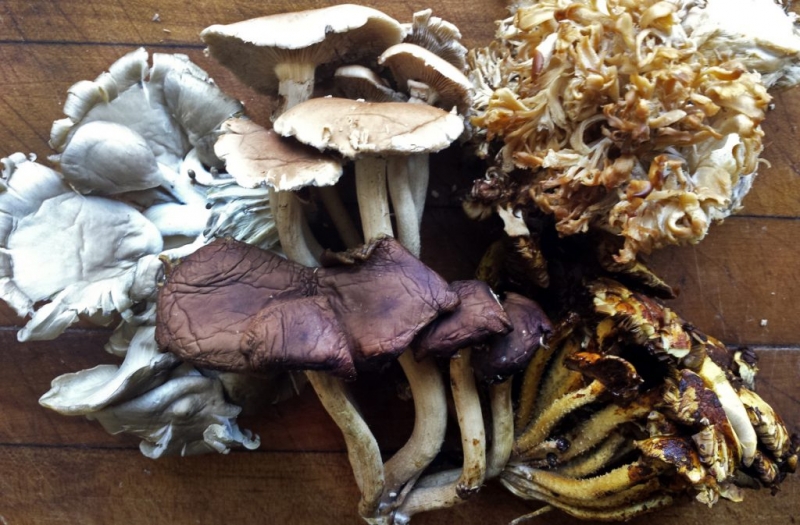
When any given wild mushroom season in Maine is a good one, I am lucky enough to know a couple of foragers who share their treasures with me, even if they won’t actually take me to their secret spots for perennial fungi plundering. Nothing pleases me more than to have a paper bagful of black trumpets appear on my back stoop. Well, except for a nice slice of hen of the woods, perhaps.
Spoiled as I am by the food-centric company I keep, I am also someone who watches closely how locally produced food becomes more available to more people over time. In that vein, I have noticed more cultivated Maine mushrooms cropping up in grocery stores recently. Sure, I almost always fall for the beautiful shiitakes Oyster Creek Mushroom Farm grows in Damariscotta and has on offer at the winter market in Brunswick. And I rarely pass up any mushroom from Westbrook-based North Spore when I see those on a restaurant menu.
But now that I can pick up an assorted box of Mousam Valley mushrooms grown in Springvale on my mid-week visit to Hannaford, I feel Maine mushrooms have hit an accessibility milestone. According to owner John Sharood, Mousam began selling mushrooms at Hannaford in 2015 and since then has steadily increased the number of stores. They’re also sold at Whole Foods, Rosemont Market and independent grocery stores from the Chesapeake Bay to the Canadian Maritime provinces.
Yes, I still need to justify the price tag – a box of Mousam Valley runs about twice the prices of the button mushrooms from California – but they also carry far more flavor, allowing me to get away with fewer in a dish with the same impact. And I don’t have to worry about my food miles’ cost on the environment, either.
Cultivated mushrooms are nothing new to Maine. Oyster Creek owner Candice Heydon has been growing hers on logs and selling them alongside expertly foraged wild Maine mushrooms since 1989. But the Maine mushrooming scene has grown to a point where it is feeding off itself.
The mushroom-growing process has three basic parts. The spawn, which is biologically speaking the mushroom mycelium (the vegetative part of a fungus) growing on a single piece of grain or sawdust for commercial growers and more conveniently in a plug for the laymen who might want to grow mushrooms in logs in their garden. To make a gardening analogy, think of that as the seed. The blocks on which the spawn is seeded; those are akin to the seedlings. And finally the edible fruit, or the mushrooms.
Maine mushrooms companies tend to specialize in certain parts of the process, says Eliah Thanhauser, head of operations at North Spore. North Spore, for instance, though it does have a hand in all three parts, specializes in spawn. The company maintains the genetic material of upwards of 200 species in its culture bank. Among those are well-known shiitakes, Thanhauser’s favorite the king trumpet, bright pink oysters and fluffy white lion’s mane mushrooms.
Thanhauser says North Spore sells this spawn to three dozen commercial clients, including Maine Cap N’ Stem in Gardiner. There, the spawn is put onto blocks. Cap N’ Stem’s business comprises selling blocks to commercial mushroom growers. One of its customers is Farming Fungi, which produces the fruiting body, or mushrooms that it sells under the Mousam Valley name.
“We still sell fresh mushrooms, for sure. Yes,” Thanhauser said. “But we’ve decided to only do that locally and find other ways to grow our business in the national market.” In addition to its commercial spawn business, the company promotes itself as a supplier of home mushroom growing kits. North Spore sells eight different self-contained kits through its website that require very little of a home grower, who simply slices open the bag the kits comes in to expose the seed to oxygen, sets the kit near the sink and out of sunlight, and waits two weeks. At that point, she gets to eat the mushrooms. If you’re looking for local mushrooms, it doesn’t get much closer than that.
























